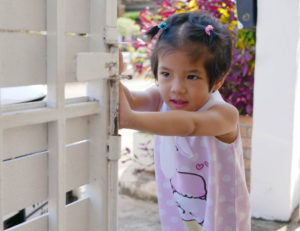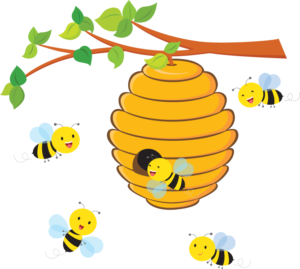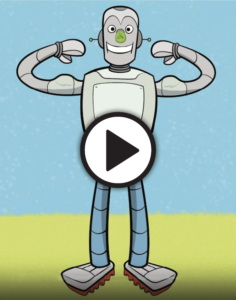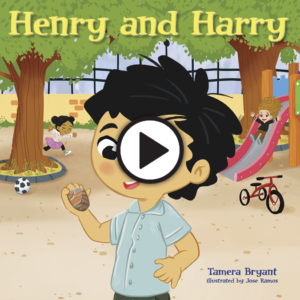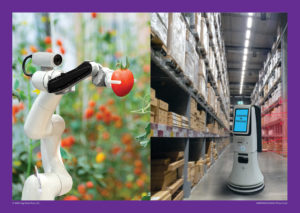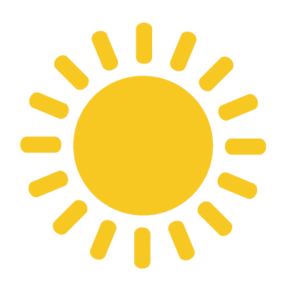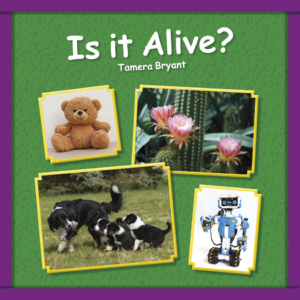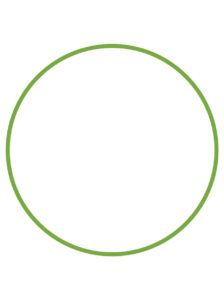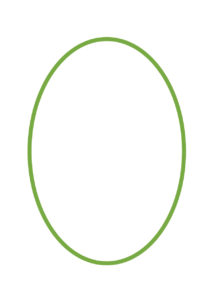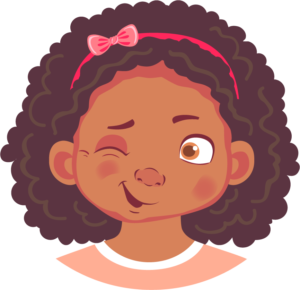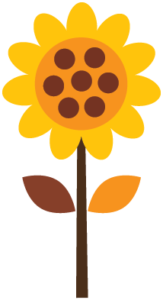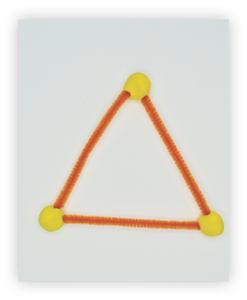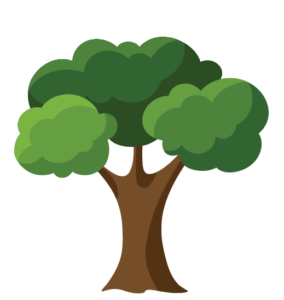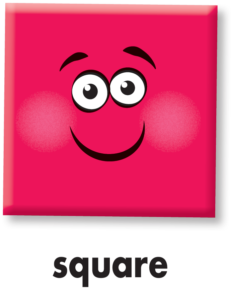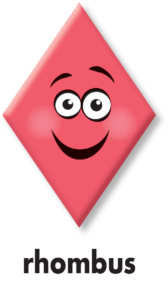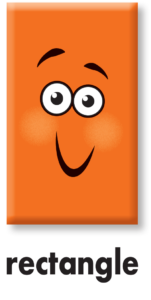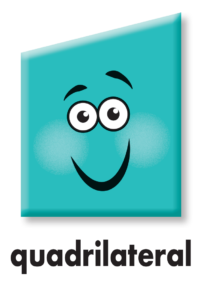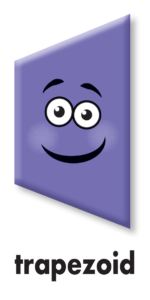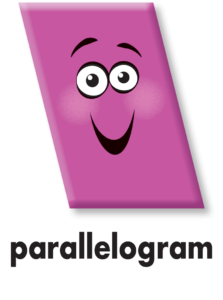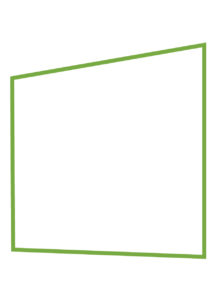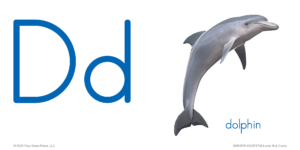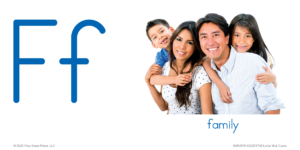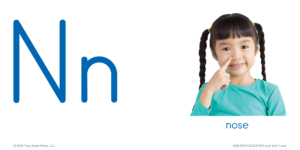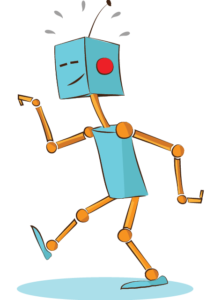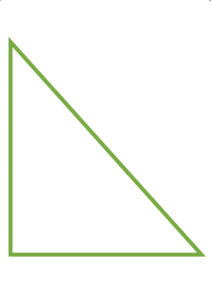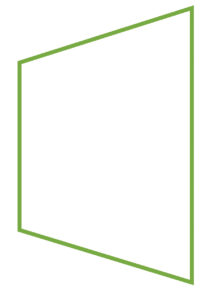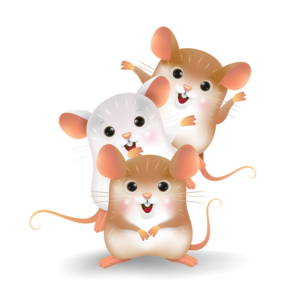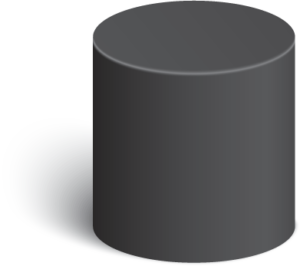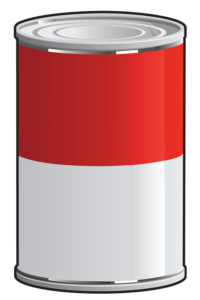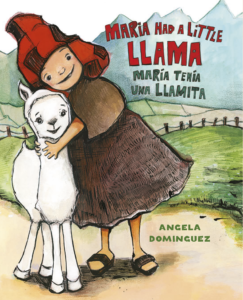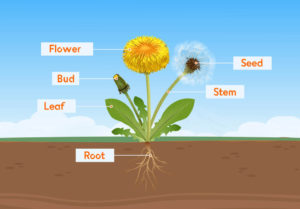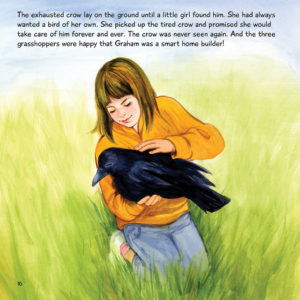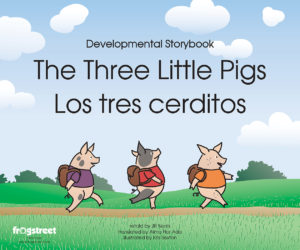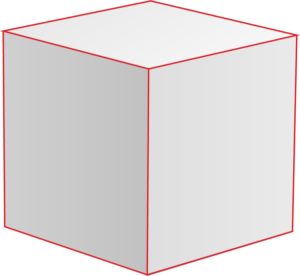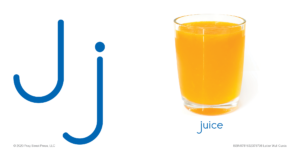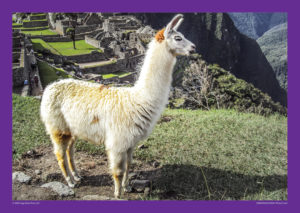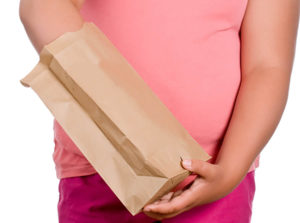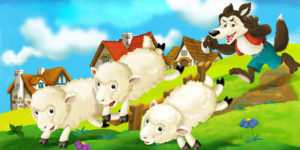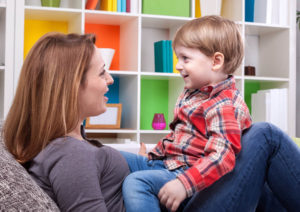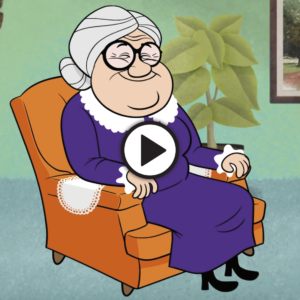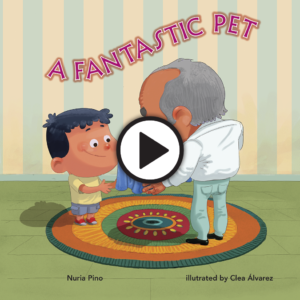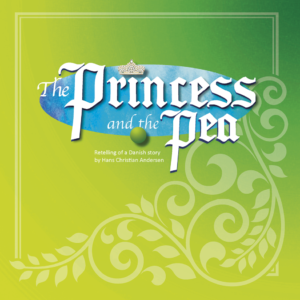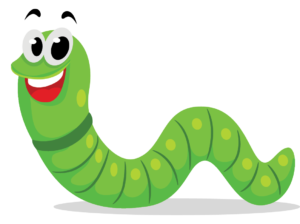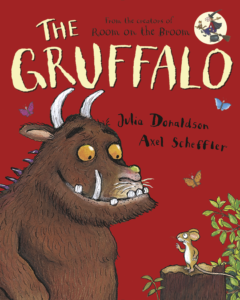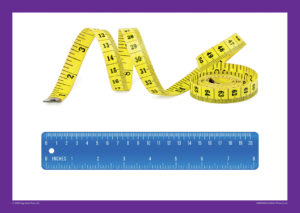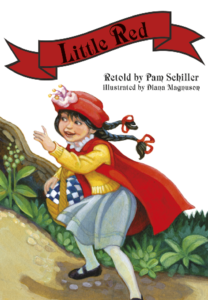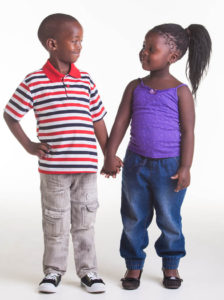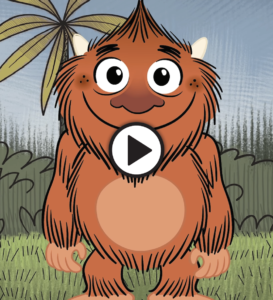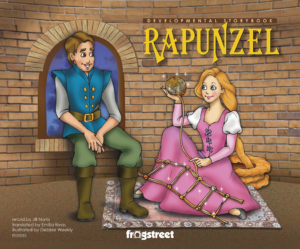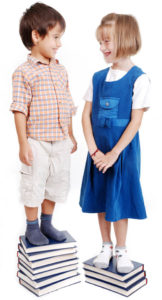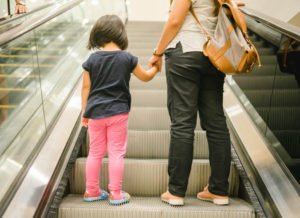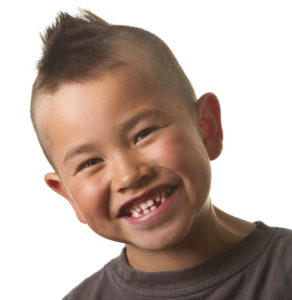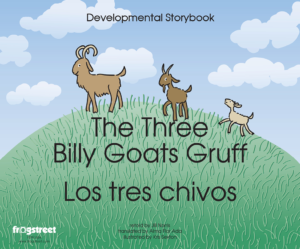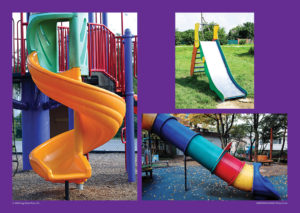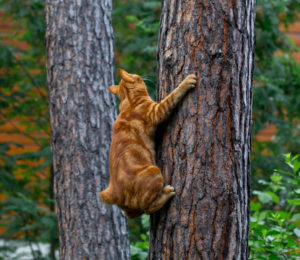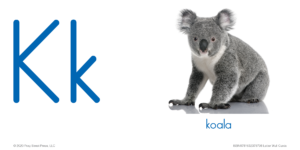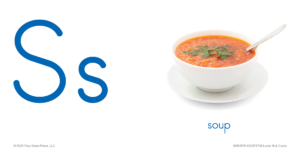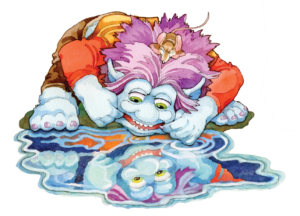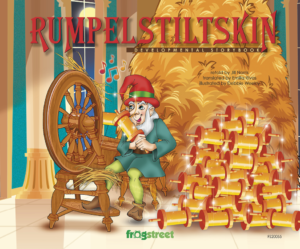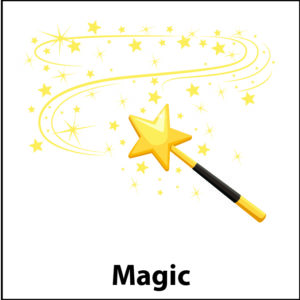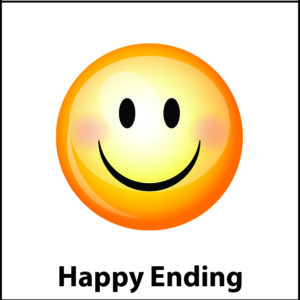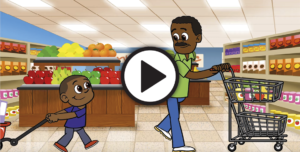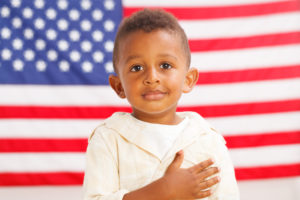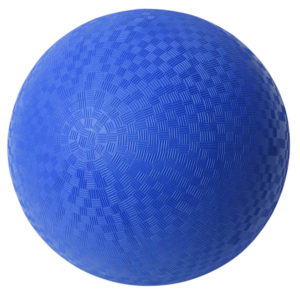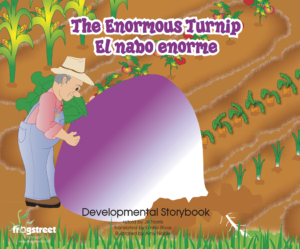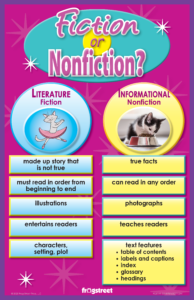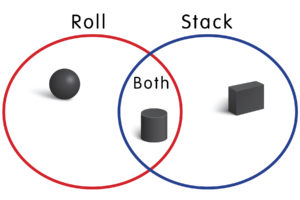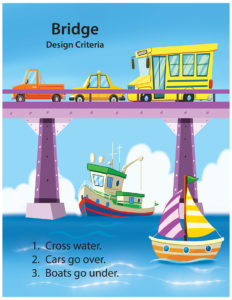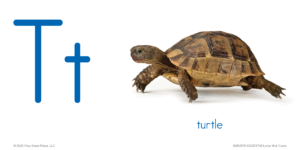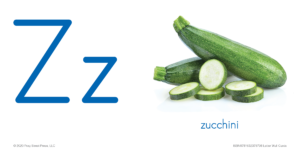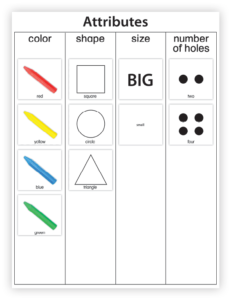Compare and Contrast
Week 1: Living and Nonliving
This week, your child will explore living and nonliving things. You will look for and observe living and nonliving things all around you.
Word of the Week: alive
Before You Begin
Watch these videos to better understand the concepts your child will be learning this week. These are not videos you will watch with your child. These are just for you!

Songs to Sing
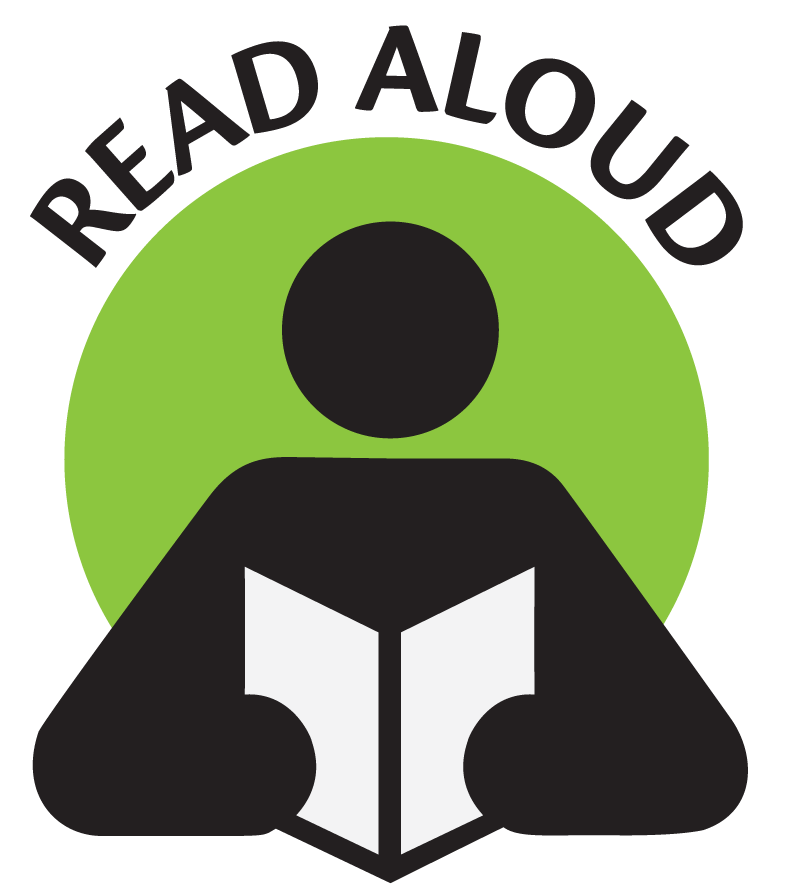
Books to Read
- Henry and Harry eBook
- Henry and Harry Read-Aloud video
- Is It Alive? eBook
Supplies to Gather
- can
- cardboard
- discarded box
- favorite stuffed animal or toy figure
- glue
- journal
- notepad
- paper
- pennies
- play dough
- pushpin
- recycled materials
- ruler
- scratch paper
- seeds
Daily Message
Henry found a rock.
- Say the sentence and ask your child to repeat it.
- Say: Rock rhymes with sock. Both words end with /ock/. Have your child say rock/sock and give a thumbs-up.
- Say sock/shoe. Have your child give a thumbs up if they rhyme or a thumbs down if they don’t.
- Have your child recall each word from the sentence as you write it.
Dancing Robots
Watch the music video “Dancing Robots” with your child. Talk about what robots can do. Ask: Are robots alive? How do you know? What happened to the dancing robots at the end? Practice making small jerking motions like a dancing robot as you dance along with the video.
Storytime
Watch the read-aloud video Henry and Harry with your child. Ask: Have you ever given a name to something that was not alive like Henry did? What was it? What did you name it?
Shape Hunt
Look at shapes and name them for your child. Click image to see larger shapes. Take a walk to look for these shapes. For example, the lines on the sidewalk make a square. List the shapes you find on a notepad. Take some photos. When you get home, look at the shapes again. Talk about which ones you saw.
Shape Picture
Cut circles, squares, triangles, and rectangles from paper. Have your child choose one of the shapes and glue it on another piece of paper. Have your child draw details to the shape to make it look like another object that is that shape. For example, a circle could be turned into a sun. Repeat using other shapes.
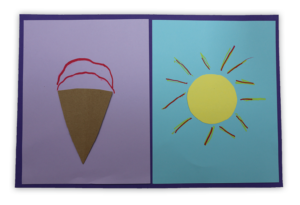
What Is a Robot?
Robots are machines. They have many different jobs. Robots can make work easier. Robots can help us find information. Robots can be for fun and play. Some robots look like people. Some robots can fly while others move like trucks or bulldozers. Some toys are robots. Click image for more about robots.
I Can Say My ABCs
Recite the alphabet with your child by taking turns. You say one letter and your child says the next letter. Sing the letters, clap the letters, and dance the letters. You might even try rolling or throwing a ball as you say each letter.
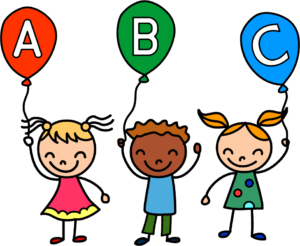
Daily Message
A dog and a dolphin are living things.
- Say the sentence and ask your child to repeat it.
- Say: dog/rug, dog/fog. Have your child repeat each word pair and signal if they rhyme.
- Write the sentence. Write letters Dd under the sentence.
- Say dog. Tell your child the word begins with letter d and the sound /d/. Can you find another word in the sentence that begins with the same sound?
Rhyming Words
Touch a door as you say door. Have your child repeat the word. Repeat by touching and saying floor. Say: Door and floor have the same middle and ending sounds. They rhyme. Repeat with chair and hair. Have your child give a “thumbs up” or “thumbs down” to tell whether word pairs rhyme.
cat/hat snake/mouse
good/wood lake/table
nose/toes sock/lock
Storytime
Look at the cover Is It Alive? Ask your child to predict if this book will have true facts (nonfiction) or be make-believe (fiction). The photographs on the cover are clues. Read the book. This book tells us how to decide whether things are living or nonliving.
Curved Shapes
Trace around the bottom of a can. Remove the can. Move your finger around the circle you just drew. Say: This is a circle. It is a curved shape. Have your child trace the shape and repeat its name. Together place string or yarn on top of the outline of the circle. Click image to learn about another curved shape.
Around the Circle
Tie one end of a piece of yarn or string around a marker. Tie the other end around a pushpin. Push the pin into the center of a piece of cardboard. Have your child hold the marker with the tip touching the surface. Stretch the string tight and draw a circle by moving the marker around the pin. Say: The outline is the same distance from the center all the way around.
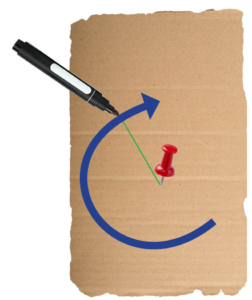
Design a Robot
Challenge your child to use recycled materials to build a robot this week. Brainstorm ideas by asking some questions:
- What kind of problem will your robot solve?
- Which materials will you use to build the robot? Why?
- How will you attach your materials together?
- Will your robot have moveable parts? What? Why?
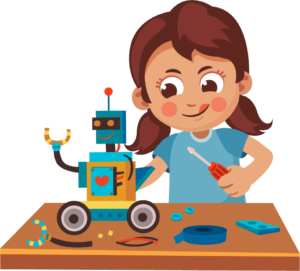
Seeds Grow
Plant seeds in the garden with your child. Discuss how you will care for the seeds. Show your child the picture on the seed package of what the seeds will look like when they grow. Point out that together you will take care of a living thing.
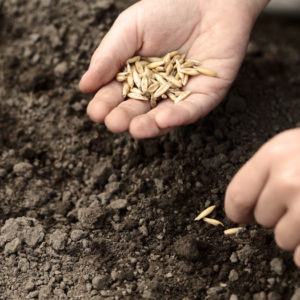
Are You Alive?
Remind your child that living things breathe, eat, and grow. Living things are alive. Have fun chanting or singing a silly poem called “You’re Alive.” Act out each question as you ask it. Your child can perform the action. You can sing the verse to the tune “Do Your Ears Hang Low?” Click image to get started!
Daily Message
A nest will not grow.
- Say the sentence and ask your child to repeat it.
- Say: nest/car, best/pest. Have your child repeat each word pair and signal if they rhyme.
- Write the sentence. Write N, n under the sentence.
- Say nest. Tell your child the word begins with letter n and the sound /n/.
Writing Together
Have your child choose a favorite stuffed animal. Ask: What is the animal’s name? Brainstorm things your child might do with the animal. Ask: What would you like to do with __________ ? Write down your child’s answer as a sentence: I would __________ with __________ . Point out the animal’s name begins with an uppercase letter.

Storytime
Turn to the page 14 of Is It Alive? Use the checklist to tell if the photos on page 15 show living or nonliving things. For example: Do the parrots breathe? need food and water? grow and change? move on their own? reproduce? If your answer is yes, they are alive. Choose something in your house and ask the checklist questions: Is it alive?
Connect the Dots
Have your child arrange three pennies on a sheet of paper. Make sure the pennies are spread apart and not in a straight line. Have your child trace along the edge of a ruler with a marker to make straight lines connecting each penny to another. Ask: What shape did you make? (triangle) How do you know it is a triangle?
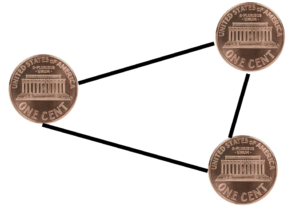
Triangle Designs
Not all triangles look the same. Give your child pieces of straws that have been cut to several different lengths. Have your child use the straws to make different triangles. Note: Connect the straws using small balls of play dough or tape if you want to keep the shapes. Click image to show your child examples of different-shaped triangles.
Make It Spin
Give your child a push pin, 11” by 1” strip of paper, and a box. Have your child pretend that the paper strip is an arm and the box is a robot body. Ask: How could you attach the paper strip to the box with the pin so the paper arm will spin around? Would the arm spin if you use tape? Glue? Why? Why not? SafetyNote: Supervise your child when using sharp pins.

Build New Shapes
Use straws or toothpicks and small balls of play dough to make different shapes. Show your child how to use a small dough ball to attach two straws at a corner. Work together to connect the shapes. Ask: How many straws did you need for your shape? How many balls of play dough did you use? Does your shape have a name?

Kind Words
We can choose how to be helpful each day. One important way to be helpful is to use kind words like please, thank you, and excuse me. Ask: What are some other kind words we can use? Talk about times during your day when kind words are needed. For example, ask: What would you say to someone who has something you would like to use?

Daily Message
Henry named his rock Harry.
- Say the sentence and ask your child to repeat it.
- Say: Larry/Harry, rock/fairy. Have your child repeat each word pair and signal if they rhyme.
- Write the sentence. Point out that Henry and Harry are names and begin with uppercase letters. Write N, n under the sentence.
- Say named. Tell your child the word begins with letter n and the sound /n/.
My Journal
Show your child the sentence the two of you wrote yesterday. Point to the stuffed animal’s name. Track the words as you read the sentence together. Have your child find the first blank page in his journal. Say: Write your animal friend’s name at the top. Then draw a picture to show what you would like to do together.
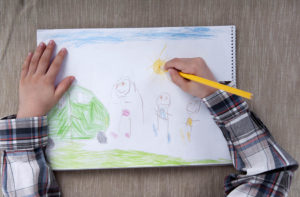
Trees
There are many different trees. This rhyme talks about elm trees, pine trees, and willow trees. Point out the names of specific trees in your yard or neighborhood. Stretch to show different tree branches as you say the “Trees” action rhyme with your child. Ask: Do the limbs on our trees stretch out to the side, up high, or droop? Click image to get started!
Storytime
Watch the read-aloud video Henry and Harry. Say: The setting of a story tells its time and place. Where does this story happen? (the playground, Harry’s house, swimming pool) When does the story happen? (It starts on Monday and ends Saturday.) What do you think Henry and Harry will do on Sunday?
Living or Nonliving
Remind your child how we can tell if something is alive: Does it breathe? Does it need food and water? Does it grow and change? Does it move on its own? Does it reproduce? Have your child decide if the pictures show something that is living or nonliving. Click image to get started.
Fold an Arm
Give your child a 11” by 1” strip of paper. Talk about the robot your child is building this week. Ask: How could you design the strip of paper to be an arm that stretches and bends? If your child does not think of folding, show how to fold the strip of paper like an accordion. Have your child practice with the strip of paper.

Your Opinion
When you tell someone what you like or how you feel, you are saying your opinion. Having opinions is part of thinking and being alive. Explain to your child people have different opinions. That is OK. For example, you might like chicken noodle soup and your child might like tomato soup. Explain that expressing an opinion can be done in a kind way.
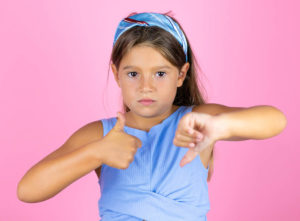
Daily Message
A fence does not grow.
- Say the sentence and ask your child to repeat it.
- Say: fence/food, sense/dense. Have your child repeat each word pair and signal if they rhyme.
- Write the sentence. Write D, d, F, f under the sentence.
- Say does. Tell your child the word begins with letter d and the sound /d/. Repeat with fence and /f/.
Storytime
Read Henry and Harry. After reading the story, turn to page 23 and reread the reasons Henry gives for deciding that Harry is not alive. Ask: Do you agree with Henry? How are Henry’s reasons like the checklist on page 14 in Is it Alive?
Guess a Shape
Think of the shapes that your child has learned this week. When your child is resting, trace a shape on his back. Invite your child to guess which shape you are tracing. Whisper clues about the shape. For a circle say: I’m making a curved line all the way around. For a triangle say: I’m making three straight sides that connect.
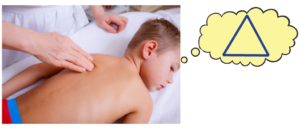
My Special Robot
Have your child share the robot she designed this week and demonstrate how it works. Ask: What is your robot’s name? What problem does it solve? What materials did you use? How did you put them together? Celebrate your child’s creativity. Ask: How would you change the design if you built another robot?
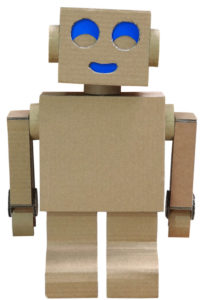
Search Together
Search for nonliving things in your home (bowl, stuffed toy, phone). Set a goal for how many you want to find and then gather them. Say: Let’s see if we can find five nonliving things in your room. Repeat the activity looking for living things (plants, pets). Do a search outdoors.
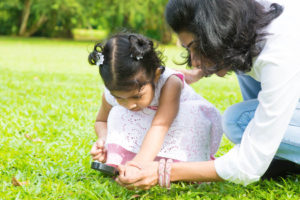
Compare and Contrast
Week 2: Stories
This week, you will enjoy hearing stories and then talking about how the stories are alike and different. You will be noticing the characters, the settings, and what happens in the story.
Word of the Week: villain
Before You Begin
Watch this video to better understand the concepts your child will be learning this week. This is not a video you will watch with your child. This is just for you!

Songs to Sing

Books to Read
- Maria Had a Little Llama eBook
- The Three Little Grasshoppers eBook
- The Three Little Grasshoppers Read-Aloud video
- The Three Little Pigs eBook
Supplies to Gather
- 3-D items (balls, cans, boxes, blocks)
- blowing test: blocks, cotton balls, feathers, bits of paper, straw, empty plastic bottle, paper fan
- cans, blocks, or small boxes
- flashlight
- journal
- note cards
- pan with a thin layer of sand
- paper
- paper bags
- paper plates
- plant
- play dough
- rectangular cardboard box
- seed
- small ball
- straw
- strength test: craft stick, straw, crayon, quarter, paper
- toothpicks
- writing tools
Daily Message
A villain does very bad things.
- Say the sentence and ask your child to repeat it.
- Say one word pair at a time: very/berry, berry/cherry. Have your child repeat each pair and signal if they rhyme.
- Write the sentence. Write V, v under the sentence.
- Say villain. Tell your child the word begins with letter v and sound /v/. Have your child circle the letter in the sentence. How many did you find?
Storytime
Watch the read-aloud video The Three Little Grasshoppers. Ask: What does the crow mean by, “Come out, come out, my dinner delight.” Explain that the crow is saying that he wants to eat the grasshopper. Invite your child to repeat the grasshopper’s reply: Not today, not tonight, not without a grasshopper fight.
Watch It Grow!
Have your child check the seed you planted last week. Show your child an unplanted seed that is the same type as the one she planted. Ask: How do you think the seed we planted will change? Can you see any changes yet? What do you think is happening to it? What would the unplanted seed need to help it grow? Water the planted seed when the soil is dry.
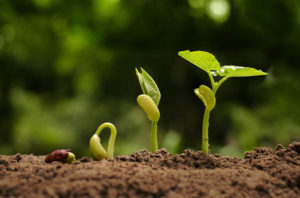
Robot Moves
Discuss with your child what he learned about robots last week. Have your child show different ways a robot might move. Direct him to move in ways that use the direction “right” and “left.” For example, ask your child to touch his right hand to his right knee, tap his right toe three times, or hop on his left foot.
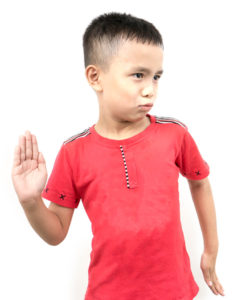
My Favorite
Share a favorite children’s book from your childhood. Tell memories you have about hearing the story: Who read it to you? If you owned the book, who gave it to you? Why did you like the story? Ask: What is your favorite book? Say: It’s okay that we each have our own favorite.

Daily Message
The little lamb followed Mary.
- Say the sentence and have your child repeat it.
- Say one word pair at a time: lamb/dog, ham/lamb. Have your child repeat the pair signaling whether the words rhyme.
- Write the sentence. Write L, l under the sentence.
- Say little. Tell your child the word begins with letter l and sound /l/. Have your child circle the letter in the sentence.
Practice Rhyming
Play this listening game. Choose a signal for showing “yes” (clap) and “no” (sit on hands). Say two rhyming words. Have your child repeat the words. Say: Show me “yes” if the two words rhyme and “no” if they do not rhyme.
berry/cherry very/little
bee/tree car/star
black/blue snake/rake
hat/hot rope/yarn
Storytime
Read Maria Had a Little Llama. Talk about the characters in the book (Maria, llama, teacher, children). Remind your child that the setting of a story is the time and place where the story happens. Explain that this story happens in South America in a town near the Andes Mountains. A llama is a South American animal with a long neck and short legs.
Stamp a Shape
Help your child roll play dough flat like a pancake. Have him stamp (make prints in the play dough) with 3-D objects, such as cans, blocks or small boxes. Have your child tell about the prints. Ask: What shape did you make? How do you know it is a [name of shape]?
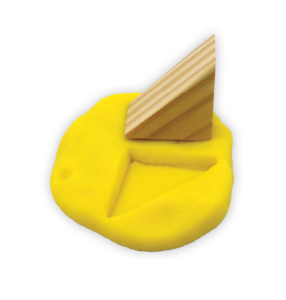
2-D Shadows
Give your child some blocks, small boxes and cans. Invite her to stack the items to make a skyscraper, tower, or building. Shine a flashlight at the tower to make a shadow. Ask: What 2-D (two-dimensional) shapes do you see? Which block, can, or box made that shadow? How do you know?
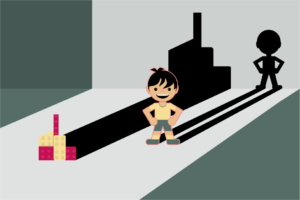
Draw in Sand
Have your child use a finger to draw and write in a pan with a thin layer of sand. Show how to erase marks to begin a new drawing by smoothing out the sand. Ask: How does the sand feel? Is it rough or smooth? Do you think that sand is a good place to write something important? Why or why not?
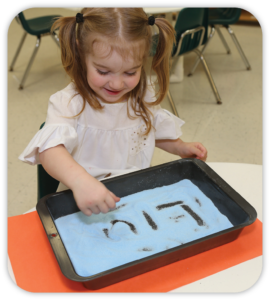
Show Compassion
Compassion is noticing when others are hurting and wanting to help them. Remind your child about the story of The Three Little Grasshoppers. Reread page 16. Ask: How did the little girl show compassion for the crow? Were you surprised? Why or why not?
Daily Message
The little pigs went jiggity-jig
down the road.
- Say the sentence and have your child repeat it.
- Say one word pair at a time: pig/jig, jig/big. Have your child repeat the pair signaling whether the words rhyme.
- Write the sentence. Write j, l under the sentence.
- Say jiggity. Tell your child the word begins with letter j and sound /j/. Repeat with little (l /l/).
Writing Together
Write family members’ names on note cards or paper. Have your child point to the uppercase letter at the beginning of each name. Explain that people’s names and the names of places begin with an uppercase letter. Help your child name the city and state where you live. Write the names. Have your child circle the uppercase letter at the beginning of each word.

This Little Piggy
The song “This Little Piggy” is a fun twist on a familiar rhyme parents often say as they count their baby’s toes. Repeat the rhyme for your child before you listen to the song. Click image for song lyrics.
Storytime
Show the cover of The Three Little Pigs. Read the story to your child. Ask: How is this story like the story of the three little grasshoppers? How is it different? Who is the villain in this story? Explain that what happens in a story is called the plot. Say: The three characters in both stories are building houses. The plots are almost the same.
Things That Roll
Have your child help you find 3-D objects (balls, cans, boxes, blocks) around your house. Push the objects to decide which ones roll and which ones do not roll. Have your child look at each object’s shape. Ask: Why does [name of object] roll? Not roll? Touch the rounded (curved) surfaces on objects that roll. Say: Things that are round can roll.
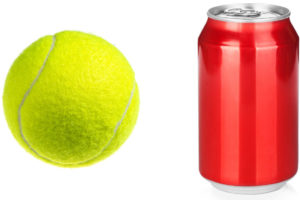
Ball or Cylinder?
Show your child a can (cylinder) and a small ball (sphere). Ask: How are the shapes alike? Different? Have your child roll play dough into a ball shape. Ask: How did you make the ball perfectly round? Next have your child change the ball into a cylinder. Ask: How could you change the ball to make it look like a cylinder? What can the cylinder do that the sphere cannot?
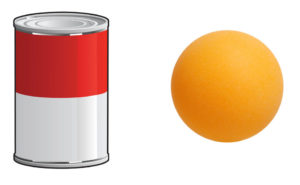
Two-Step Commands
Have your child pretend to be a robot. Give two-step commands to practice moves:
- Take three steps forward. Take three steps backwards.
- Turn left. Go forward two steps.
- Go two steps forward. Turn right.
When your child is successful with two steps, try giving three-step commands that move in two different directions.
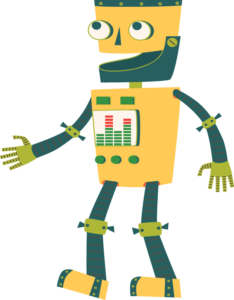
Find Letters
Have your child find printed words in your home that begin with uppercase letters. You might check the titles of books, names and addresses on letters, food in your kitchen, or labels in clothing. When you find a letter, talk about why it is uppercase. For example, is it someone’s name? the title of a book?
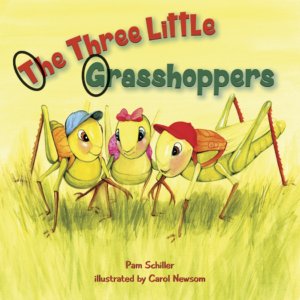
Protect Yourself
A villain who does bad or hurtful things in a story is like a bully. Help your child think of ways to protect herself from a bully (use a big voice, ignore the bully, play with friends who are not bullies, tell an adult). Practice some words your child might say in a situation where she felt bullied. Help her say “No” to bullying.
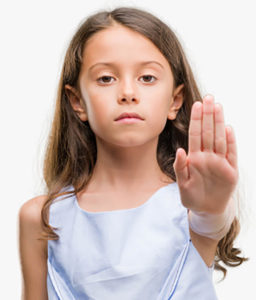
Daily Message
The villain blew down the house.
- Say the sentence and have your child repeat it.
- Say one word pair at a time: house/horse, house/mouse. Have your child repeat each pair signaling whether the words rhyme.
- Write the sentence. Write V, v under the sentence.
- Say villain. Tell your child the word begins with letter v and sound /v/. Have your child circle the letter in the sentence.
My Journal
Have your child find the first blank page in her journal to draw a favorite place. Remind your child that the names of special places begin with uppercase letters. Write the name of the place your child drew on a note card or paper. Have your child copy the name to label the picture.
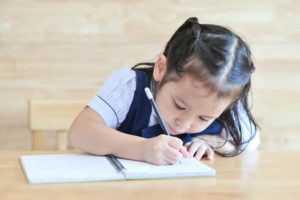
Animal Songs
Many of the songs that you and your child sing are about animals. Think of some of your favorites. Ask: Is the animal in the song like a real animal or is it a make-believe animal? How do you know? Sing your favorite song together and then sing your child’s favorite.

Storytime
Watch the read-aloud video The Three Little Grasshoppers. Listen carefully as Pam Schiller points out the differences between fiction (make-believe) and nonfiction. Have your child find a fiction (make-believe) story on your bookshelf. Ask: How did you know it was fiction? Help your child use the information in the video.
Things That Stack
Invite your child to explore which 3-D objects will stack and which will not. Try balls, cans, boxes and blocks. Invite your child to look at each object’s shape. Ask: Why can you stack or not stack [name of object}? Point out the flat parts on each object that allow it to be stacked. Say: Things with flat surfaces will stack on top of other flat surfaces.
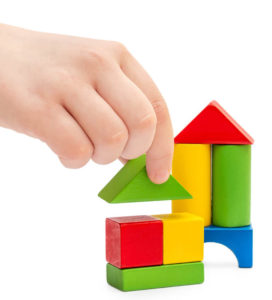
Build a Cube
Have your child count the edges of a small box or block. The red lines on the image show “edges.” Have your child use a finger to trace each edge (four on the top, four on the sides, and four on the bottom). You should count 12 altogether. Challenge your child to build a cube with toothpicks and play dough. Click image to get started!
Follow a Path
Arrange six paper plates on the floor in a path. Give your child directions to hop along the path. For example, say: Hop four plates forward. Turn right. Now hop two plates forward. Invite your child to count out loud to keep track of her hops forward. Make a new path and repeat.
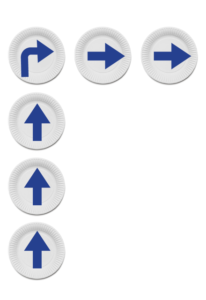
Test Blowers
Have your child use a straw to blow small objects (blocks, cotton balls, feathers, bits of paper) off a table. Ask: Which items are easy to blow off? Which ones are too heavy to move? Repeat the experiment with a different blower, such as an empty plastic bottle or a paper fan. Ask: Which blower do you think has the strongest puff of air?
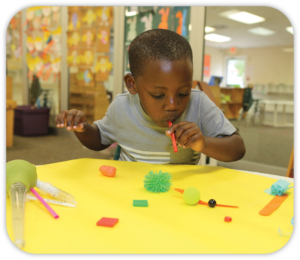
How Did You Feel?
Talk about two of the stories you have read this week: The Three Little Grasshoppers and The Three Little Pigs. Ask: How could you change the stories so that the crow or the wolf were helpful instead of hurtful? Connect the stories to your child’s life: Has anyone ever destroyed something you built or made? How did you feel? What did you do?
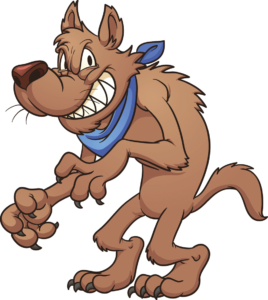
Daily Message
The grasshoppers lived safely in their root home.
- Say the sentence and have your child repeat it.
- Say one word pair at a time: root/boot, boot/boat. Have your child repeat each pair signaling whether the words rhyme.
- Write the sentence. Write L, l under the sentence.
- Say lived. Tell your child the word begins with letter l and sound /l/. Have your child circle the letter in the sentence.
Letters and Sounds
Focus: Jj /j/, Ll /l/, Vv /v/
Write the focus letters for the week on note cards. Draw a simple picture with each letter: such as a lemon for l. Name the letter, its sound and the picture (Ll, /l/, lemon). Have your child repeat the letter names and sounds. Click image for more fun!
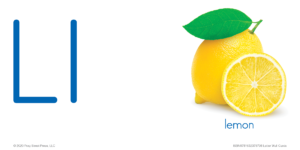

Storytime
Read Maria Had a Little Llama with your child. Ask: What do you know about llamas? How do you think they are like lambs? Click image to learn more about these two animals.
Strength Test
Test the strength of some materials, such as a craft stick, straw, crayon, quarter and paper, with your child. Have your child try to bend each object using only hands or fingers. Ask: Were you able to bend [name of item]? Why? Why not? Which items were easy to bend? Why? Which ones were not easy? Why? Which ones broke or tore?
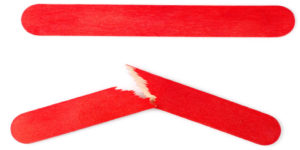
Plan a Path
Arrange eight paper plates in a path that makes one or more turns. Give directions for your child to hop along the path. Invite your child to rearrange the plates to create a path that looks different from the one you made. Have your child give you directions for following the path.
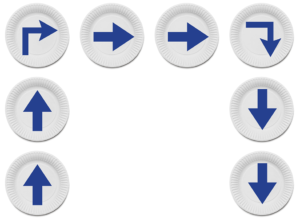
Compare and Contrast
Week 3: Real and Make-Believe
This week you and your child will talk about real and make-believe. You will be listening to many fairy tales. Your child will use her imagination to create her own stories.
Word of the Week: make-believe
Before You Begin
Watch this video to better understand the concepts your child will be learning this week. This is not a video you will watch with your child. This is just for you!

Books to Read
- A Fantastic Pet eBook
- A Fantastic Pet Read-Aloud video
- Little Red eBook
- Rapunzel
- Rumpelstiltskin
- The Gruffalo eBook
- The Princess and the Pea eBook
- The Three Billy Goats Gruff
Supplies to Gather
- chair or step stool
- child-size socks
- dried bean or pea
- food boxes (2)
- journal
- note cards
- paper
- paper plate
- paper towels
- peanut butter and crackers
- pebbles
- penny
- pillow
- plant
- plastic plate
- ruler, tape measure (if available)
- slide materials: paper towel tubes, tape, small cans or blocks, penny
- stuffed animals or toy vehicles (3)
- tape
- toothpick
- towel
- writing tools
- yarn
Daily Message
Kale salad is a healthy choice.
- Say the sentence and have your child repeat it.
- Say one word pair at a time: kale/sale, wind/mail. Have your child repeat each pair signaling whether the words rhyme.
- Write the sentence. Write K, k under the sentence.
- Say Kale. Tell your child the word begins with letter K and sound /k/. Have your child circle the letter in the sentence.
Vocabulary
Make-believe means not real. Have your child close his eyes and think of a make-believe character. Ask: What color is your character? Is it like an animal or a vehicle? What color is its tongue? Is your character tall or short? What can your character do? Click image to enlarge the word and photo.
I Know an Old Lady
Watch the music video “I Know an Old Lady.” It’s a musical make-believe story. Pause the video after the song and see if you can name all of the animals that the old lady swallowed in sequence (order). Then start the video again and check to see if you were correct.
Storytime
Watch the read-aloud video A Fantastic Pet. After the story, play a pet guessing game together. Line up three stuffed animals or toy vehicles. Take turns giving clues about one of the items in the row. Have the other player guess which one you are describing.
Different Sizes
Invite your child to compare the sizes of two food boxes. Stand the boxes next to each other as they would be on a grocery store shelf. Ask: Which is taller? Shorter? How do you know? Compare the width of the boxes. Ask: Which is wider? How can you tell?
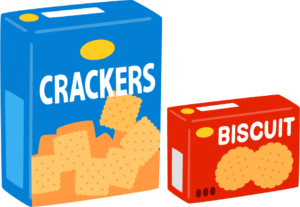
Shorter or Longer?
Invite your child to use a toothpick to compare the growth of the stem from the seed she planted during Week 1. (Use a house plant if your seed is not growing.) Tell your child to place the bottom of the toothpick where the stem begins sticking out of the dirt. Ask: Is the stem longer than the toothpick? Shorter? How do you know?
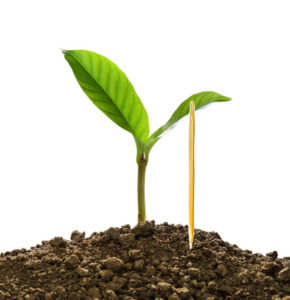
Feeling Texture
Invite your child to compare different textures outside. Place a towel on different surfaces. Ask your child to lie on the towel. Start by placing the towel on concrete. Ask: How does it feel? Soft? Hard? Next try grass. Ask: How does it feel? Cool? Warm? Try other surfaces.
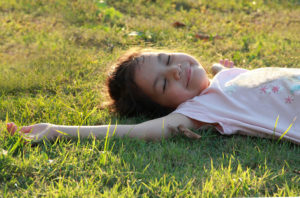
Can You Feel It?
Place a dried bean or pea under a pillow. Have your child sit on the pillow. Ask: Can you feel the bean? Read The Princess and the Pea. In this fairy tale, a true princess is able to feel a single pea when she sleeps on a stack of 20 mattresses and 20 quilts.
Sleepy Prince
Yawning is a great way to release stress. Have your child stretch his arms high over his head as he pretends to yawn. (Often pretending will cause a real yawn!) Ask: Are you sleepy? Let’s call this big yawn stretch, the “Sleepy Prince” (or Princess).

Daily Message
A mouse had a
make-believe friend.
- Say the sentence and have your child repeat it.
- Say one word pair at a time: mouse/house, mouse/snake. Have your child repeat each pair signaling whether the words rhyme.
- Write the sentence. Write m, b under the sentence.
- Say make. Tell your child the word begins with letter m and sound /m/. Have your child circle the letter in the sentence. Repeat with believe, /b/.
Storytime
Explain that The Gruffalo is a make-believe story about a strange creature. As you read, have your child join in by saying the repeated line: There’s no such thing as a Gruffalo. When you finish reading, ask: Which parts of the story are real and which parts are make-believe?
Thick or Thin?
Offer your child a snack of peanut butter and crackers. Invite her to try one cracker with a thick spread of butter and another with a thin spread. Ask: Will I need more or less butter for a thick spread? Why do you think so? Invite your child to vote on which she prefers: thick or thin?
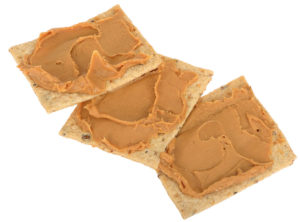
Can You Climb It?
Talk with your child about types of technology that help people climb or get from one level to another. Make a list of your child’s ideas. Add more ideas by walking around your neighborhood to find examples, such as a ladder, rope, stairs, elevator, escalator, or ramp. Ask: How does [name of technology] help you climb?

Little Red
When authors retell stories, they sometimes change the characters. The main character in this retelling of Little Red Riding Hood is a very modern young lady. She carries a cell phone in her pocket. Read Little Red. Ask: If you were going to change one of the tales that you have heard this week, which one would it be? How would you change it?
With You
It is important to feel a sense of belonging. Just being with a family member or a friend can make a young child feel safe and connected. Have your child repeat the chant “I Like to Be with You” while doing some actions with a sibling. (You say one line, your child echoes the line.) Click image to get started!
Daily Message
A bed has a soft mattress.
- Say the sentence and have your child repeat it.
- Say one word pair at a time: bed/red, red/fed, bed/house. Have your child repeat each pair signaling whether the words rhyme.
- Write the sentence. Write m, s under the sentence.
- Say mattress. Tell your child the word begins with letter m and sound /m/. Have your child circle the letter in the sentence. Repeat with soft, /s/.
Writing Together
Help your child draw a make-believe creature. Fold a piece of paper into three parts. Draw the head in the top part, the body in the middle part, and the legs in the lower part. Ask your child to describe the creature. Label the parts with her words. Point to the labels. Have your child “read” the description with you.
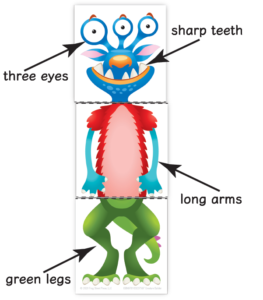
Wild Things
The music video, “Wild Things” invites your child to dance, move, and freeze. Your child will love becoming a “wild” thing. Point out that gnash means to grind or bite together.
Storytime
Today’s story, a fairy tale, has many make-believe parts. Many fairy tales include good vs. evil, solve a problem, use the number three, include royalty (king, queen, prince, princess), and have a happy ending. Read “Rapunzel.” Ask: What parts of the story were make-believe?
That’s Not Fair!
Have your child stand on a chair or a step stool. Stand next to your child and squat down so you appear shorter. Ask: Who is taller? Are you really taller than me? Why not? Help your child understand that we need to follow important rules to make accurate measurements. Click image to get started!
Princess and the Pea
Remind your child about how the princess in The Princess and the Pea could feel the pea under a stack of mattresses. Place 2, 3, 4, and 5 pebbles in separate child-size socks. Challenge your child to use only his fingers to feel the number of pebbles through the fabric and tell how many “peas” are in each sock.

Rhyming Words
Say three words. Ask your child to tell which two words rhyme. Say: fast, last, and run. Which two words rhyme? Repeat saying: past, day, cast. Try different sets of words.
mouse/house/woods
pet/cage/net
gold/straw/old
king/kick/wing
funny/bunny/baby
pea/knee/mat
A Commitment
Remind your child what it means to make a commitment. Say: A commitment is like a promise. Review the commitments you have learned: Listening Ears, Walking Feet, Helping Hands, and Big Voice. Give examples of each. Have your child choose a commitment for today.
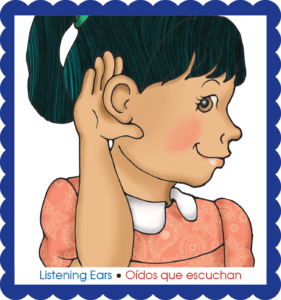
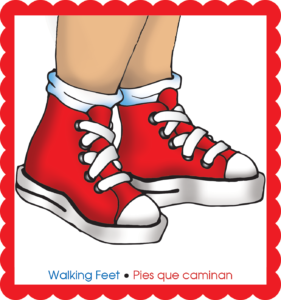
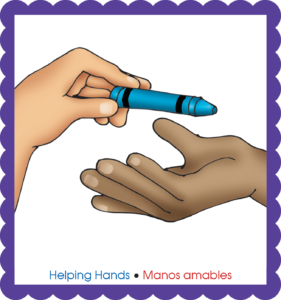
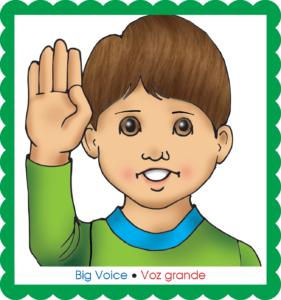
Daily Message
A king rules over a kingdom.
- Say the sentence and have your child repeat it.
- Say one word pair at a time: king/sing, sing/bed, king/bring. Have your child repeat each pair signaling whether the words rhyme.
- Write the sentence. Write k under the sentence.
- Say king. Tell your child the word begins with letter k and sound /k/. Have your child circle the letter in the sentence.
My Journal
Show your child the creature that the two of you drew yesterday. Have your child find the first blank page in his journal and draw a new creature. Help label the parts. Share the make-believe creatures with other family members.
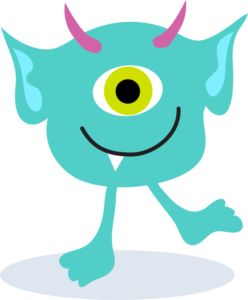
A Special Haircut
A mohawk is a special haircut (sides of the head are shaved with a longer strip of hair in the center). Have your child imagine Rapunzel, the princess with the very long hair, with a mohawk. Listen to “Rapunzel Got a Mohawk.” The song changes several tales and “turns them around.” Ask: How would you change a fairy tale? Click image for lyrics.
Storytime
Read The Three Billy Goats Gruff with your child. Have your child join you in saying “trip, trap, trip, trap” for the goats’ footsteps. Speak softly for the little goat and loudly for the big goat. Ask: How would you describe the troll in the story? Do you think the troll is a villain? Why or why not?
How Far?
Invite your child to measure how far he can jump. Mark a start line with tape. After your child jumps, mark where he lands with another strip of tape. Have your child hold a ball of yarn at the start line. Unravel the yarn in a straight line to the landing mark. Cut the yarn. Say: The length of the yarn shows how far you jumped.
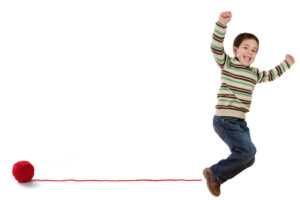
Tree Climber
Have your child look at the trees around your house. Ask: Which trees might be too hard to climb? Why? Explain that it is not always safe for a child to climb a tree. Say: Some animals are better tree climbers than people. Have your child suggest some good tree-climbing animals. Click image to look at a great tree climber!
Create a Story
Create a make-believe story with your child. Begin with the words “Once upon a time”: Once upon a time, in a land far away, there was a village of people no bigger than your finger. Have your child take turns with you adding to the story. Ask questions to help your child with ideas: What problems did they have? How did they solve them?
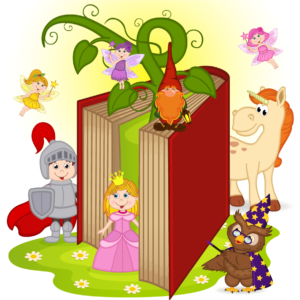
Giving a Gift
In the story of Little Red Riding Hood, the little girl takes food to her grandmother. Ask: Why would a child take a treat to her grandmother? Have you ever taken food to your grandma? What food would your grandmother like to get? Giving a gift is one way to show someone you care.
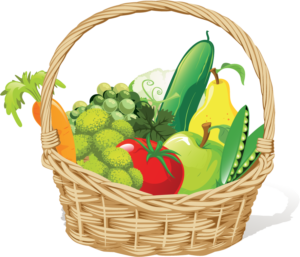
Daily Message
Rapunzel sang a beautiful song.
- Say the sentence and have your child repeat it.
- Say one word pair at a time: song/long, long/wrong, song/bed. Have your child repeat each pair signaling whether the words rhyme.
- Write the sentence. Write b, s under the sentence.
- Say beautiful. Tell your child the word begins with letter b and sound /b/. Have your child circle the letter in the sentence. Repeat with sang, /s/.
Storytime
Today’s story, Rumpelstiltskin, is another fairy tale. In this story, one of the characters is a greedy king. Greedy means always wanting more. The king was never happy with what he had. Another character is a strange little man who is able to spin gold from straw (dried grass). Read Rumpelstiltskin. Ask: Did you notice any rhyming words in this story?
The Long Way Around
Have your child use yarn to measure around a paper plate. This is called the circumference. Have your child measure straight across the plate’s midsection. This is called the diameter. Have your child compare the two lengths of yarn. Point out that the distance around a circle is always longer than the distance straight across.
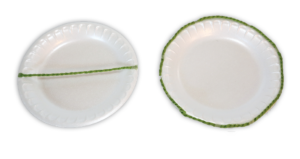
Disappearing Water
Have your child pour a small amount of water on a plastic plate and some on a paper towel. Ask: What happens to the water on the plate? on the paper towel? Confirm that the paper towel absorbed (soaked up) the water. The plastic plate did not absorb it. The water makes a little puddle on the plate. Which material would be better for wiping up spills?
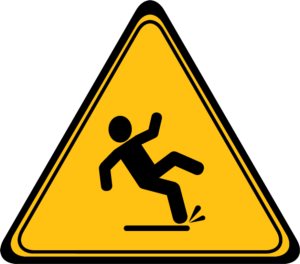
Design a Slide
Have your child use paper towel tubes, tape and small cans or blocks to build a slide. Have her test to see if an object will go down the slide by putting a penny through the tube. Encourage her to experiment adjusting the slant of the tube to see which height makes the penny go the fastest.
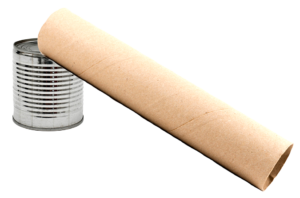
Comparing Tales
This week, you and your child read several fairy tales: Rapunzel, The Three Billy Goats Gruff, Rumpelstiltskin, The Princess and the Pea, and Little Red. All these fairy tales have some parts that make them alike. See if you can remember what parts these stories share. Click image to get started!
Compare and Contrast
Week 4: Opposites
This week, you and your child will explore how things are exactly different from each other as you continue to compare and contrast things around you.
Word of the Week: opposites
Before You Begin
Watch this video to better understand the concepts your child will be learning this week. This is not a video you will watch with your child. This is just for you!

Songs to Sing

Books to Read
- Opposites eBook
- Opposites Read-Aloud video
- Push and Pull eBook
- The Enormous Turnip eBook
Supplies to Gather
- ball
- basket
- boxes or stuffed toys
- cups, bowls, funnels, and bottles
- glue
- journal
- magazines or advertising flyers
- note cards
- paper
- several small objects of different weights
- socks
- sturdy bridge: blocks or cans, pennies, ruler, strip of paper
- things to pull: wagon, door, toy on a string, weeds
- things to push: gate, swing, tricycle, ball
- towels
- toy cars
- writing tools
- yarn
How Do You Feel?
Remind your child that we all have feelings. Our feelings are not good or bad. Our feelings give us information. We can learn how to manage our feelings. Recite this verse using different feelings and face expressions.
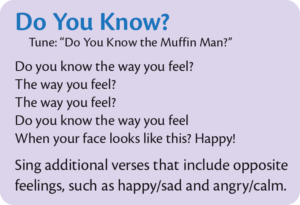
Daily Message
A turtle is slow. A tiger is fast.
- Say the sentences and have your child repeat them.
- Say three words. Have your child tell the two that rhyme. Say: fast/last/run. Which two words rhyme? Repeat saying: past/day/say.
- Write the sentence. Write T, t under the sentence.
- Say tiger. Tell your child the word begins with letter t and sound /t/. Have your child say the letter name and sound.
Opposites Attract
Watch the music video “Opposites.” As you listen to the video, see if you can call out the opposite once you hear the first word. For example, when Don says right, you say left. Continue listening to the video to see if you were correct.
Storytime
Watch the read-aloud video Opposites with your child. Encourage your child to respond to the storyteller’s questions.
Study a Button
Help your child name the different characteristics (attributes) of this button. Ask:
- What size is the button?
- What color?
- What shape?
- How many holes does it have?
Use your child’s answers to make a sentence: The button is a big yellow triangle with two holes. Have your child repeat the sentence.
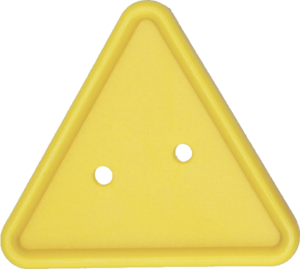
Short and Tall?
Ask: Can a person be called both short and tall? How? Stand a cup next to your child. Ask: Are you taller or shorter than the cup? Have your child stand next to the refrigerator. Ask: Are you taller or shorter than the refrigerator? Explain that whether you look tall or short depends on who or what you are standing next to.
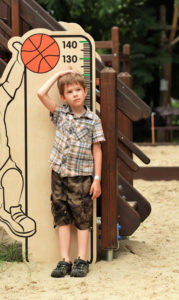
Water Play
Have your child explore cups, bowls, funnels and bottles in the sink or tub. Ask: How will you fill containers and empty them? Can you think of more than one way? Have your child show you a full cup and an empty cup. Point out that empty and full are opposites.
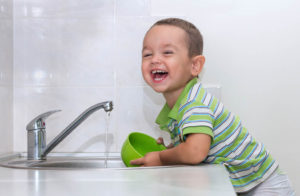
Daily Message
Pull a zipper up or down.
- Say the sentence. Have your child repeat it.
- Say three words. Have your child tell the two that rhyme. Say: down/run/gown. Which two words rhyme? Repeat saying: house/town/down.
- Write the sentence. Write P, p, Z, z under the sentence.
- Say Pull. Tell your child the word begins with letter P and sound /p/. Have your child say the letter name and sound. Repeat with zipper.
New Rhymes
Ask your child to think of a word that rhymes with a pair of rhyming words. Say two words (mouse/house). Have your child repeat the words. Say: Tell me another word that rhymes with house and mouse. A nonsense word is fine, such as fouse or touse. Repeat with: fat/hat, tree/bee, and big/pig.
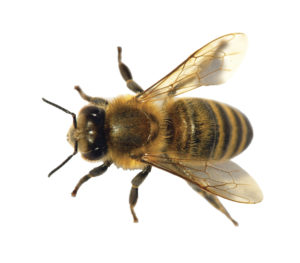
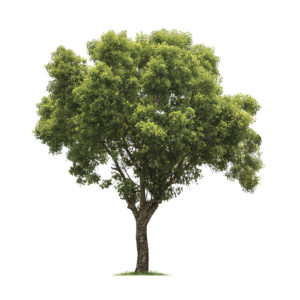
Push and Pull
Have your child hold a ball and push it up and over his head. Take the ball from him and pull it down and pass it under your legs. Your child will run around behind you and take the ball from you repeating the “push-it-up-and-over” movement. After a few repetitions, switch places so your child has a chance to pull down and under.
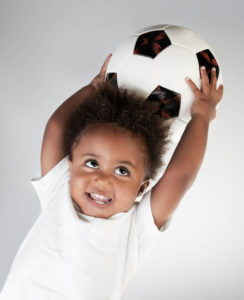
Storytime
Read the title of Push and Pull. Say: This is an information book about moving things by pushing and pulling them. When you finish reading, have your child show how to push something and how to pull something. Say: You were the force (power) that made the __________ move.
Two Buttons
Have your child look carefully at two buttons and describe their size, color, shape, and number of holes. After your child describes each button, ask: Which two attributes are the same for both buttons? (color, shape) Which two attributes are different? (size, number of holes)
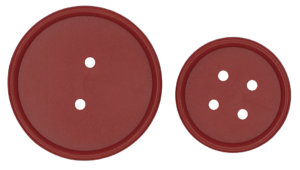
I’m a Bridge!
Have your child arch her back to form a bridge. Cut pieces of yarn to show the length (distance between hands and toes) and the height (distance of stomach from floor) of the bridge. Use the two pieces of yarn to find boxes or stuffed toys that could “sail under” the bridge. Pretend the boxes are ships.
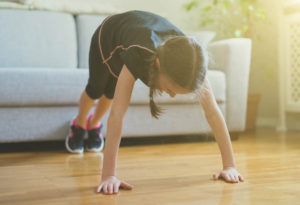
I Spy Opposites
Go on an outdoor hunt for opposites. Have your child find something that is:
- up/down (clouds/grass)
- hard/soft (seed pod/flower)
- heavy/light (tree branch/feather)
- hot/cold (sun/shade)
- rough/smooth (rocks/shells)
- big/little (tree/bush)
- in/out (bird in a bird house, bird on a branch)
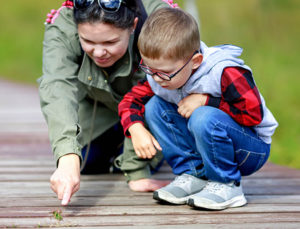
Slow, Quick
Take a slow, deep belly breath and then a quick breath. When we take a slow breath, we breathe in through our nose and our belly goes out. (When we breathe quickly, our chest usually goes out.) Practice a slow breath (breathing in counting to four and out counting to four). Remind your child that quick and slow are opposites.
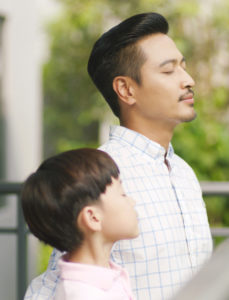
Daily Message
Push toothpaste out of the tube.
- Say the sentence. Have your child repeat it.
- Say three words. Have your child tell the two that rhyme. Say: push/bush/ring. Which two words rhyme? Repeat saying: ball/bush/cush.
- Write the sentence. Write T, t under the sentence.
- Say toothpaste. Tell your child the word begins with letter t and sound /t/. Have your child say the letter name and sound.
Writing Together
Notice the uppercase letters at the beginning of names of special places. Ask your child to answer these questions. Write down the answers. Have your child point to and name the uppercase letter in the place names.
- What is the name of your school?
- What is the name of our town?
- What is the name of your favorite sports team?
Song of Opposites
Chant or sing these words to practice opposites. Use actions for opposite words. Sing to the tune of “Mary Had a Little Lamb.”
This is big and this is small.
(open arms wide; bring palms almost together)
This is big. This is small.
This is big and this is small.
Sing along with me.
Repeat with: tall/short, black/white, fast/slow, yes/no
Storytime
Show the cover of The Enormous Turnip. Explain that this is a tale about a vegetable called a turnip. Have your child listen to find out if the story is about pulling or pushing. Read the story. Ask: Have you ever pulled something from the ground? What? Did you do it by yourself or did you need help?
Your Name, My Name
Draw two circles that lap over each other. Write your child’s name inside one circle. Write another name inside the other circle. (The two names must share at least one letter.) Compare the letters in both names. Draw a line through the letters that are the same in both names. Write those letters in the space where the circles overlap.

Guess My Rule
Two overlapping circles, called a Venn diagram, can be used for sorting. Each circle will hold objects that are the same in some way (follow a rule). Objects that follow the rules of both circles are placed in the center where the circles overlap. Click image to guess the sorting rules!
A Sturdy Bridge
Have your child build a bridge using blocks (or cans), pennies, 12” ruler and a 2” by 11” strip of paper. Ask: How could you use the cans to support a bridge? Would the ruler or strip of paper be a better choice for the part that goes across (spans the bridge)? Why? Why not? Place pennies in the middle to see if it is sturdy (can hold weight).

Fast and Slow
Make a 2-column chart labeled “Fast” and “Slow” on a large piece of paper. Have your child draw pictures of things that are fast or slow. Help label the drawings. Instead of drawing, have your child use a crayon to circle pictures in magazines or advertising flyers. Cut around the circles. Glue the pictures to the chart.
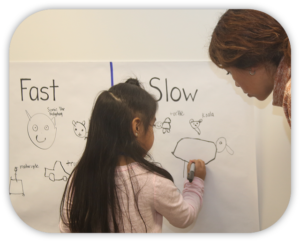
Yes or No
Play this fun game of opposites. Explain that when you say “yes,” your child will say “no.” Ask your child to copy your voice tone, face expression, or movement. Be silly! For example, you might use a high-pitch voice, frown, or sing loudly. Try saying the word as you laugh, sneeze, hiccup, or pretend to cry. Enjoy the laughter!
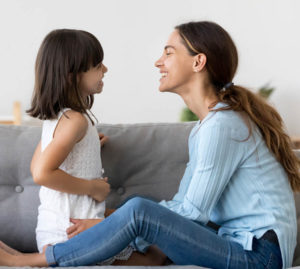
Daily Message
I saw tigers and zebras at the zoo.
- Say the sentence. Have your child repeat it.
- Say three words. Have your child tell the two that rhyme. Say: rat/boo/moo. Which two words rhyme? Repeat saying: do/zoo/car.
- Write the sentence. Write Z, z under the sentence.
- Say zebra. Tell your child the word begins with letter z and sound /z/. Have your child look for another word in the sentence that begins the same.
My Journal
Talk about the stew that Emma and Emerson (characters in The Enormous Turnip) planned to make. Have your child think of a vegetable she likes in stew. On the first blank page in her journal, have your child draw the vegetable and copy I like __________ . naming the vegetable. Remind your child to write her name on the page.
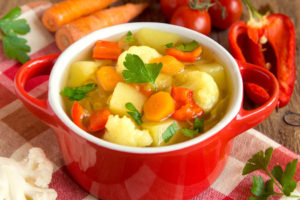
Storytime
Watch the read-aloud video Opposites. Remind your child that fiction means make-believe and nonfiction means real with facts (informational). Say: Fiction and nonfiction are opposites. Click image to review that a nonfiction book includes photographs, teaches readers, and can be read in any order.
Crayon Marks
Have your child change the force used (push down hard or lightly) to make a mark with a crayon. Ask: What happens when you push down hard? lightly? Which mark leaves a thicker layer of crayon wax on the paper? When are some other times you could push down hard or push down lightly? (toothpaste, squeeze bottle, lotion)
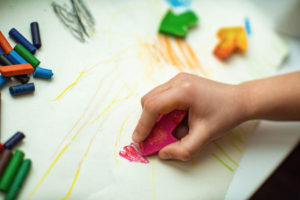
Build a Bridge
Challenge your child to gather supplies to build a bridge. Explain that a bridge should be sturdy so that toy cars could drive across it and high enough that toy boats could sail under it. Say: These are the “design criteria” (the rules for the bridge). Click image to talk about the design criteria. Plan to share the completed project tomorrow.
Heavy or Light?
Have your child compare objects by weight. Place several small objects of different weights into a basket. Have your child choose two objects and compare them by lifting and balancing one in each hand. Ask: Which object is heavier? Continue comparing sets of two. Say: Heavy and light are opposites.

Commitments
Remind your child that the two of you work together to keep your learning time safe. You both focus on helpful behaviors. Ask: What is the opposite of helpful? (hurtful) What is the opposite of safe? (dangerous, unsafe) Review the commitments you have learned: Listening Ears, Walking Feet, Helping Hands, Big Voice.




Daily Message
The enormous turnip was hard to pull.
- Say the sentence. Have your child repeat it.
- Say three words: hard/yard/ball. Ask: Which two words rhyme? Repeat saying: nail/card/guard.
- Write the sentence. Write P, p under the sentence.
- Say pull. Tell your child the word begins with letter p and sound /p/. Have your child say the letter name and sound.
Forward and Backward
Listen to “The Alphabet Song.” Your child should be able to sing along with the first verse. Point out that the song continues as the singer moves through the alphabet backwards. Challenge your child to begin to learn this opposite way of singing the alphabet. Say: Forward and backward are opposites. Click image for lyrics.
Storytime
Read Push and Pull. Use the glossary (page 16) to read the definitions of push and pull. Explain that a glossary tells the meanings of words in a book. The words in the list are in alphabetical order. They are placed in order based on their first letter so they follow the same order as the alphabet.
Laundry Sort
Have your child sort socks. Give the sorting rule, such as red socks in one pile and socks with holes in the other pile. Use two towels on the floor to create two sorting spots. Once all socks are sorted, ask: Were there any red socks with holes? Pull the towels so they overlap so there is an area for socks that fit in both piles.
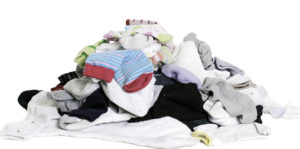
Bridge Unveiling
Give your child time to complete the bridge she began building yesterday. Gather family members and have your child share the design. Use toy cars and boxes as pretend boats to test the bridge. Ask: What materials did you use? What was your favorite part about making the bridge? Remind your child that building bridges in real life involves many different workers.

Push and Pull
Go outside with your child to show the opposites: push and pull. Have your child show how to push (gate, swing, tricycle, ball) and pull (wagon, door, toy on a string, weeds out of the ground).
